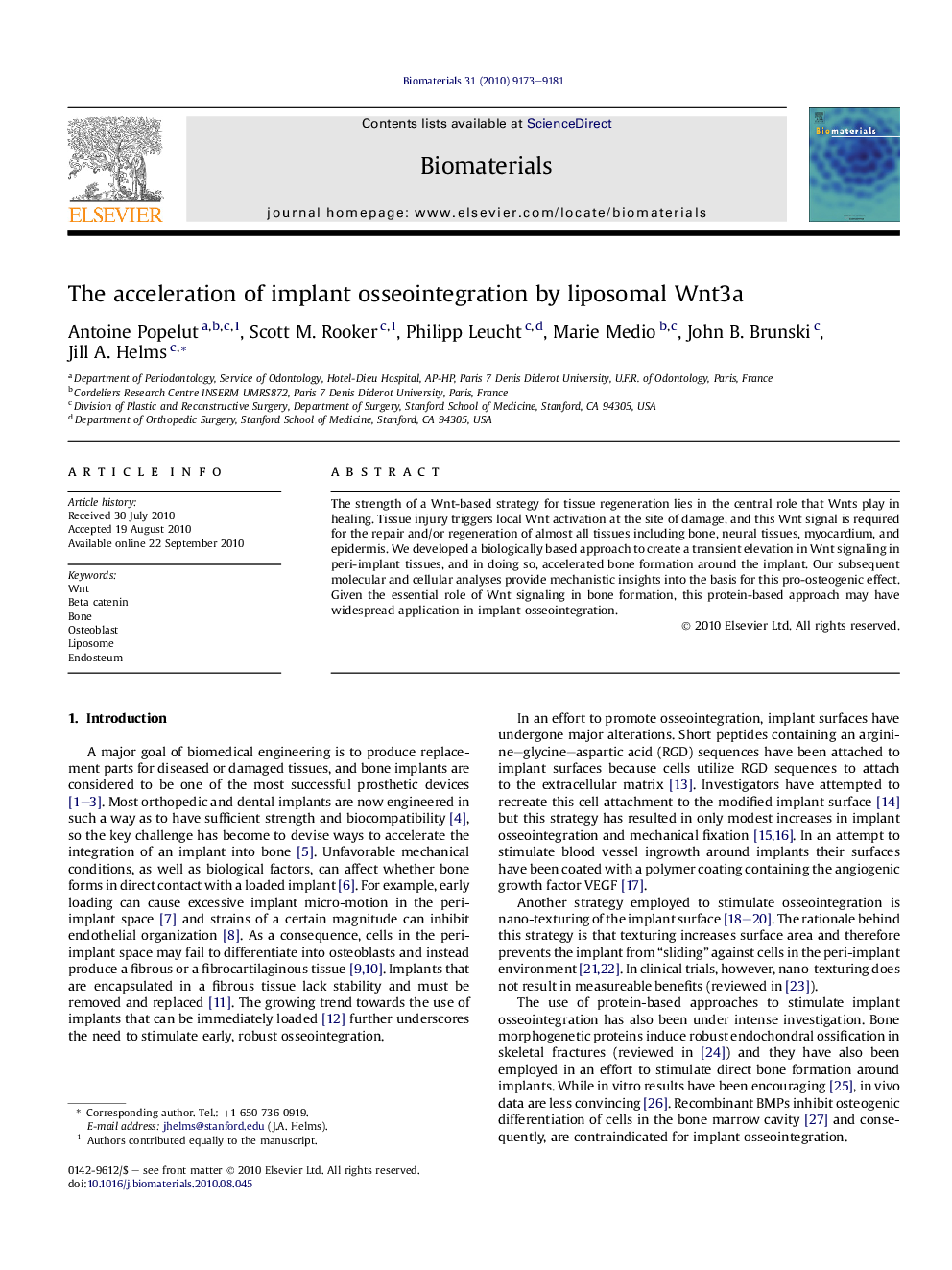| Article ID | Journal | Published Year | Pages | File Type |
|---|---|---|---|---|
| 8536 | Biomaterials | 2010 | 9 Pages |
The strength of a Wnt-based strategy for tissue regeneration lies in the central role that Wnts play in healing. Tissue injury triggers local Wnt activation at the site of damage, and this Wnt signal is required for the repair and/or regeneration of almost all tissues including bone, neural tissues, myocardium, and epidermis. We developed a biologically based approach to create a transient elevation in Wnt signaling in peri-implant tissues, and in doing so, accelerated bone formation around the implant. Our subsequent molecular and cellular analyses provide mechanistic insights into the basis for this pro-osteogenic effect. Given the essential role of Wnt signaling in bone formation, this protein-based approach may have widespread application in implant osseointegration.
